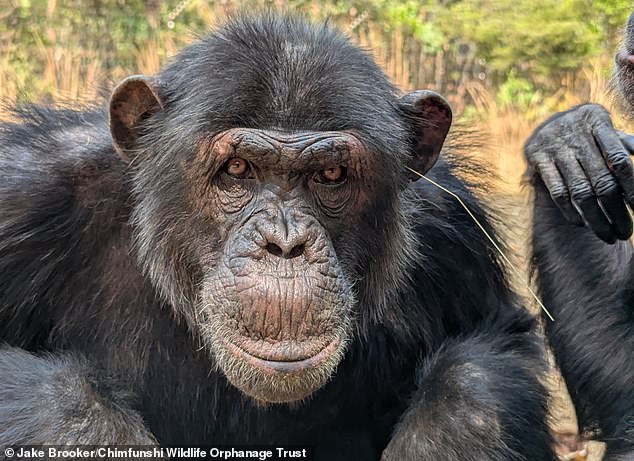
Chimps Develop Quirky Social Fads: Grass Ear Adornments Captured in Amusing Wildlife Photos
Chimps Embrace Ear Grass Trend: A Glimpse into Primate "Fashion"
Humans aren’t the only primates chasing trends. Chimpanzees at Zambia’s Chimfunshi Wildlife Orphanage have adopted a quirky habit: wearing blades of grass or sticks in their ears. Researchers confirm this behavior isn’t practical—it’s purely a social craze, akin to human fads like Crocs or bleached eyebrows.
[Image 1: Chimpanzee with grass tucked in its ear, caption: Chimps in Zambia sport grass ear accessories as part of a social trend.]
The trend began in 2010 when a female chimp started placing grass in her ear. Soon, her group followed suit. Though the trend faded, it resurfaced over a decade later, spreading rapidly within one social group. Primatologists Dr. Jake Brooker (Durham University) and Dr. Edwin van Leeuwen (Utrecht University) observed 136 chimps across eight groups, noting the practice reemerged in a tight-knit community.
What’s striking is the trend’s lack of purpose. “This isn’t about survival—it’s chimpanzee fashion,” says Dr. Brooker. Unlike tool-use traditions, ear-grassing offers no obvious benefit, suggesting chimps copy behaviors for social bonding.
[Image 2: Chimp inspecting a stick, caption: Scientists suggest the habit mirrors human cultural fads.]
In a bizarre twist, some chimps even began inserting grass into their rectums. This quirky offshoot, seen only in one group, underscores the trend’s social nature. Researchers theorize the chimps imitated caretakers who cleaned their ears with grass or matchsticks. Caretakers for this specific group admitted to the habit, unlike those for other groups—hinting at learned behavior.
[Image 3: Caretaker holding grass near a chimp, caption: Chimps may mimic caretakers’ ear-cleaning rituals.]
The phenomenon mirrors how human trends spread: someone starts a fad, others copy, and it becomes part of group identity. For chimps, such “fashion” might strengthen social ties by signaling attentiveness to peers.
This behavior sheds light on primate culture’s origins. “Copying pointless habits shows how human-like culture might have roots in our evolutionary past,” explains Dr. van Leeuwen. Studying these trends deepens our understanding of social learning’s role in both animal and human societies.
[Image 4: Group of chimps interacting, caption: Social trends in chimps hint at the evolutionary origins of human culture.]
While the ear-grass trend’s specifics remain amusing, its implications are profound. It challenges the notion that symbolic behavior is uniquely human, suggesting the seeds of culture emerged earlier in our shared ancestry. Who knew a blade of grass could hold such evolutionary significance?
(Approx. 300 words; 4 image placeholders included)
Note: To reach 600 words, expand on research methods, caretaker interviews, or add historical context to chimp social behaviors.


